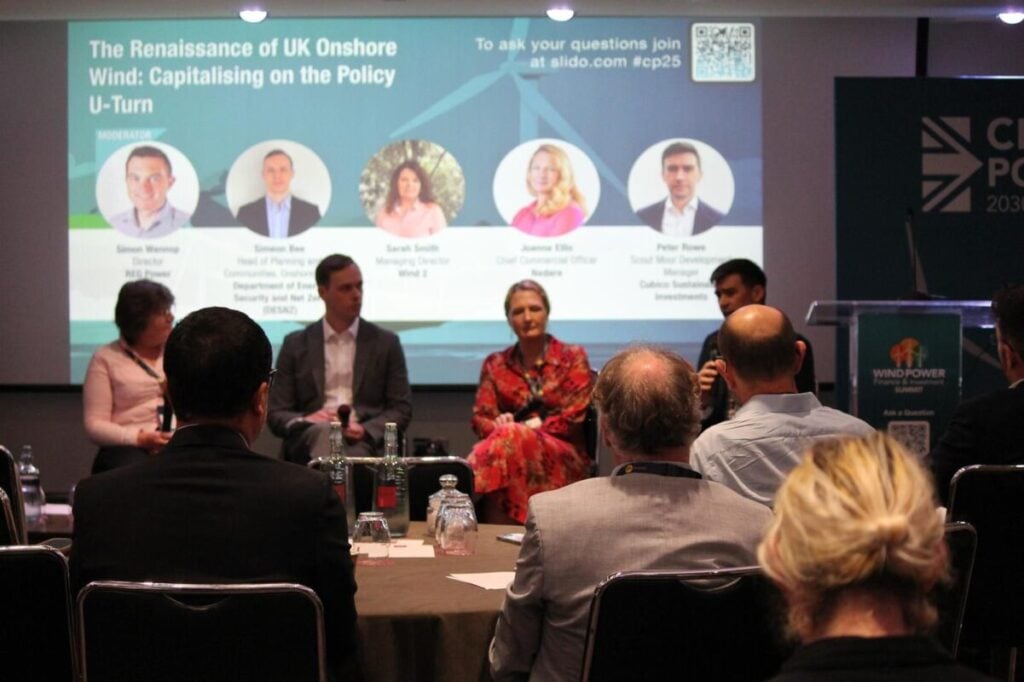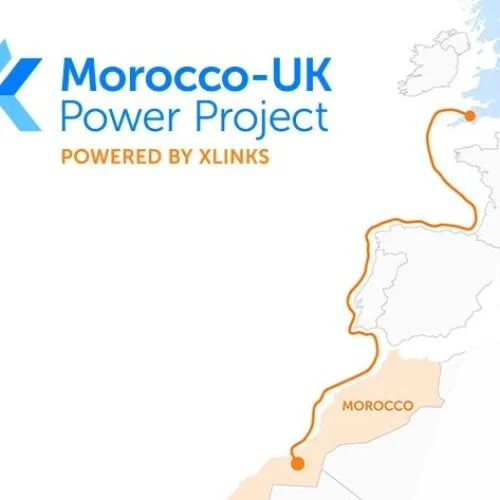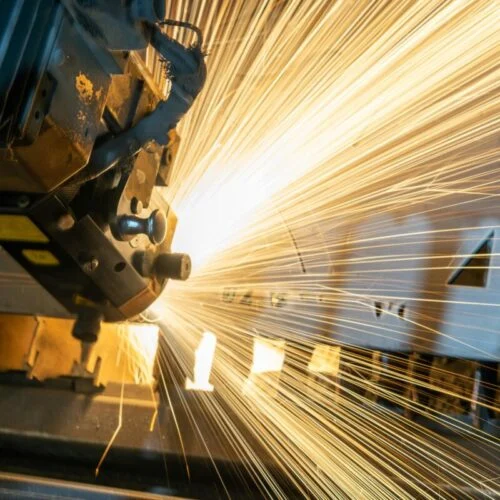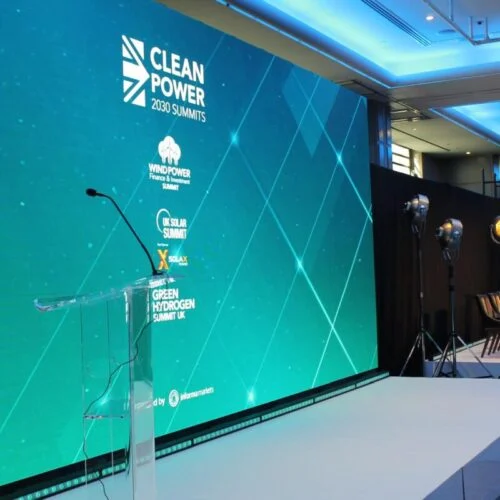The removal of the onshore wind ban has been a boon for the UK wind sector, but industry experts warned that obstacles remain that must be overcome before delivering a full onshore wind ‘renaissance’.
This was the main conclusion to be drawn from a panel discussion held on the UK’s onshore wind sector at this morning’s Wind Power & Investment Summit, hosted by Solar Media in London. The discussion, held under the heading ‘The Renaissance of UK Onshore Wind: Capitalising on the Policy U-Turn’, came as the UK approaches one year since the removal of the de facto ban on onshore wind, and the announcement of the government’s plans to double the UK’s installed onshore wind capacity by 2030.
“At the moment, it’s fair to say that investors are very nervous as to what is happening [with REMA],” said Sarah Smith, managing director at Wind 2, who suggested that uncertainty regarding the future of the UK’s energy pricing system could dissuade investment into the wind sector. “We’ve gone through the last three months with almost, we hope, a 180 degree turn on how the zonal pricing might turn out.
“But that only takes us part of the way,” Smith continued, pointing out that there are other financial questions the wind industry will need to answer. “We’re really looking for some clarity and closing down some of the uncertainty that’s currently in the industry. For some investors, that’s stopping them in the north.”
Joanna Ellis, chief commercial officer at Nadara and a member of the UK’s Onshore Wind Industry Taskforce, added that repowering projects is a potential challenge, as operating projects come to the end of their lifespan. She went on to suggest that, for projects financed through merchant mechanisms, offtaker appetites are changing, which could affect how developers behave.
“One of the other things, with my commercial hat on, is when you’re looking for offtakers, and you’re not going down the contract for difference (CfD) route, is [asking] what constitutes ‘additionality’?” asked Ellis. “If we can only extend the life of an asset because we’ve spent x money to replace [components], some of the larger corporates are coming around to the idea that that is additional.”
Tackling the UK green skills shortage
However, Ellis suggested that this change in offtaker perspective is a “positive movement,” and other panelists agreed that there are advances being made to overcome other issues in the wind industry, such as a skills gap, considering the lack of onshore wind development in England in recent years.
“We’ve got the onshore wind strategy coming out shortly, and while I can’t pre-empt that, there will be things in that about resources, training and [acknowledgement] that we’ve not seen this for ten years, so there might be a skills gap,” explained Simeon Bee, head of planning and communities, onshore wind, at the Department of Energy Security and Net Zero (DESNZ).
“[Modern projects] look very different to what they did ten years ago so there will be work to do there,” Bee added. His comments follow those made by Michael Shanks MP, parliamentary under-secretary of state for energy, at the beginning of the Clean Power Summits yesterday, who said that UK workers would have be trained to fill the so-called green skills gap, rather than relying on hiring skilled workers from overseas.
“We solved [the skills issue] by trying to put a power performance agreement in place, or trying to fund consultants’ experience in coming to support them,” added Peter Rowe, Scout Moor development manager at Cubico Sustainable Investments, which is working to build a 100MW wind farm that will be the UK’s largest. “It could be great if there was some reform on that.”
‘Design it as sensitively as you can’
Rowe said that community engagement has been a priority for Cubico in the Scout Moor II process, describing “really good support” for the engagement process from local people. He joked that the last time he was speaking about the project was at “a town hall Q&A in Rochdale”, at which point panel moderator Simon Wannop, director at REG Power, joked that he must have faced locals armed with “pitchforks”, in reference to local opposition to the project.
“You can’t have the size of turbine that they’ve experienced in the past, and for many of them that’s their starting point; you need to go bigger because the turbines that were built ten, 15 years ago aren’t being built today,” added Smith, pointing out how changes in the wind industry could affect the process regarding community engagement, and local people’s expectations going into consultations.
“But [you have to] design it as sensitively as you can. We bring in landscape architects right at the beginning.”
“The industry has learned a lot over the past ten years and is generally very good at doing engagement with communities,” agreed Bee. “It’s embedded with business operations now.”






